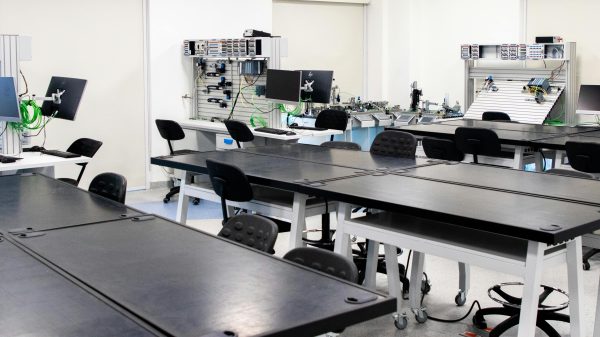Telecommunications networks are tasked with meeting the world’s growing demand for connectivity. We are moving into a new digital era, with many more services, greater complexity, more connected devices and an ever-increasing merging of the physical and digital worlds. This means more data traffic, a need for lower latency and a demand for greater personalization and security.
With the evolution of networks, the objective is to be able to support this future digital world while enabling new business models for operators. To achieve this, on the one hand, it is necessary to incorporate new technology following the evolution of technological cycles and, on the other, it is necessary to expose network capacities to third parties offering programmable service platforms. And always following criteria of economic profitability, sustainability and capturing fair value.
Technological cycles
The next technological cycles of fibre networks, FTTH and mobile networks are leading to a technological revolution in capacity that will allow services to be offered in the home at speeds of up to 10 Gbps symmetrical, “upgradeable” to 50Gbps at a later stage.
In mobile, 5G will be followed by the evolution of 5G Advanced and, later, 6G, which will introduce much higher frequency bands that will offer substantially higher capacity and much lower latency. Connectivity at home will also evolve with new versions of Wi-Fi allowing the full capacity offered by fibre to be harnessed.
This will make possible to support applications such as extended reality, holographic communications, the internet of things in industry 4.0, truly autonomous driving, mass remote assistance or the management of robot and drone arrays. It will also extend network coverage in remote or hard-to-reach areas by offering broadband service anywhere on the planet thanks to the integration of satellite networks, not terrestrial ones, in access. In the area of the internet of things, there will be much greater integration of communication systems and sensors, with a single common 6G infrastructure. This will allow digital twins to be built more reliably and efficiently.
The network will have technologies such as Network Slicing that will enable networks with specific characteristics to be dynamically created to guarantee, for example, critical services. Edge, or edge computing, will reduce latency and support, for instance, distributed artificial intelligence or host services such as online gaming.
The evolution of these technology cycles and the deployment of these technologies in networks will be accompanied by the massive switch-off of legacy technologies, such as copper networks, as well as 2G and 3G networks and associated systems.
Network softwarization and the move to the cloud
The network and systems will be supported by a distributed multi-cloud hybrid infrastructure that will host and run the system loads and software-based network functions. This means that we will be able, depending on the type of service we want to provide and to whom, to dynamically and automatically select on which type of cloud we want the functions to be deployed with particularised solutions. For example, if we want to deploy a fast, low-latency service, such as online gaming, we’ll get as close as we can to the customer and deploy on what we call the Edge. For other types of services, we will choose in which cloud to deploy based on the efficiency and performance needed, the criticality of the functions, privacy, regulatory or strategic requirements. The important thing is that with the multi-cloud approach we will be able to move loads from one site to another, and with the hybrid approach we will be able to use our private networks, those of another infrastructure provider and even those of a hyperscaler. We will choose what is most convenient. For all this to be possible, the network functions, which are going to be portable software from one cloud to another, i.e. cloud-native, have to enable this interoperability.
And why is this migration to the cloud necessary? Because thanks to the softwarization of the network and the availability of the cloud and these distributed computing capabilities, it is possible to create networks and services dynamically and specifically for each need. The network thus becomes a large computing and connectivity platform that dynamically reconfigures itself to provide the desired end service. This requires extensive end-to-end orchestration at all levels of the network and systems, decoupling the different layers so that each can evolve independently. On the one hand, the end products we provide to our customers; on the other, the services that make up those products; and below that, the capabilities, i.e. the resources that the network and systems provide to create these services. It is essential to make these layers independent, to isolate these planes so that the capabilities are offered to the upper layer independently and with their own lifecycle managed at each level. Why? Because with this design it is possible to compose products of greater complexity by reusing the designed parts and it is possible to offer third parties the possibility of including these capabilities in their own services.
Open and disaggregated architectures
The softwarization of the network and the evolution to open and disaggregated architectures, which separate the hardware vendor from the software vendor, separating the latter into several independent functional modules, will increase flexibility in approaching the deployment of new architectures, programming new use cases and innovating. It will also improve cost and increase the vendor ecosystem by lowering barriers to entry and facilitating interoperability.
In the radio access network domain, the natural evolution is towards Open RAN and Cloud RAN, with a virtualised and cloudified architecture where the baseband hardware is standardised servers, the interfaces between network equipment are open and standardised and the software runs in the cloud. Starting from the traditional architecture where all radio access elements are mostly co-located at the radio site and provided by a single vendor, the first steps towards Open RAN have several implications. There is a change of architecture by splitting the base stations into several functional and physical elements: the radio unit, the distributed unit and the centralized unit. The implementation is modified by virtualizing some of them, running in a cloud environment on, or outside, the base station. Open interfaces defined by the O-RAN Alliance are also used, allowing different vendors to be applied for each element of the radio architecture.
In the case of the fixed access network, it evolves from the traditional, rigid architecture to a new flexible, virtualised architecture with Open Broadband. This allows for more innovation and access programmability with new network use cases. At the transport network level, at the IP and optical layer, this disaggregation is also progressing at the different router levels. The core, which is already fully disaggregated and virtualised, is already the first to take advantage of the benefits of using mature and well proven operational processes in IT and cloud environments.
The networks of the future will be built in sharing with other operators, and this will require the network architecture to have evolved to open architectures.
Automation and the use of Artificial Intelligence to achieve the autonomous network
The network of the future requires evolving both the lifecycle management and the operational model of the infrastructures to be able to manage this complexity. And in this great challenge, automation is a must. The technology, network and systems lifecycle must be fully automated. The challenge is to get to full automation of all the processes that govern the networks and our systems. It will go from planning through provisioning, testing, field deployment and optimisation to the operation of a technology. This requires the use of artificial intelligence and machine learning techniques, sharing experiences and best practices by leveraging the vast amount of data generated and collected by the network and its platforms. Artificial intelligence and automation help to solve repetitive tasks more quickly or tasks that respond to certain patterns extracted from the data generated by the network. This will streamline planning, testing, deployment, operation and maintenance processes, as well as improve the quality perceived by customers. It will be possible to standardize automated solutions for the different phases of all these operations, as if we always had the best expert attending to a problem. The ultimate goal is to achieve autonomous networks, capable of making decisions, leveraging artificial intelligence and machine learning techniques to achieve a “zero-touch” operation.
The network of the future
The evolution of technology itself is leading to ever more powerful, scalable, energy-efficient, and secure networks. Networks that will not only offer connectivity, but also high computing capacity and will bring the digital much closer to the physical. Simplicity, interoperability, and reusability are the three pillars on which to build new services in the digital context. And the network must be the substratum on which to articulate this magic, orchestrating all the resources and capabilities needed to offer services to the end customer.
In the evolution towards the connections of the future, technology cycle management, softwarization and the move to the cloud, open and disaggregated architectures and automation and the use of artificial intelligence are four essential levers.
The objective is to have a large, programmable, distributed connectivity and supercomputing platform, capable of offering its capabilities on demand and in a customized manner. Ready to support new business models, ready to integrate all the innovations that are yet to come, ready for the future.













